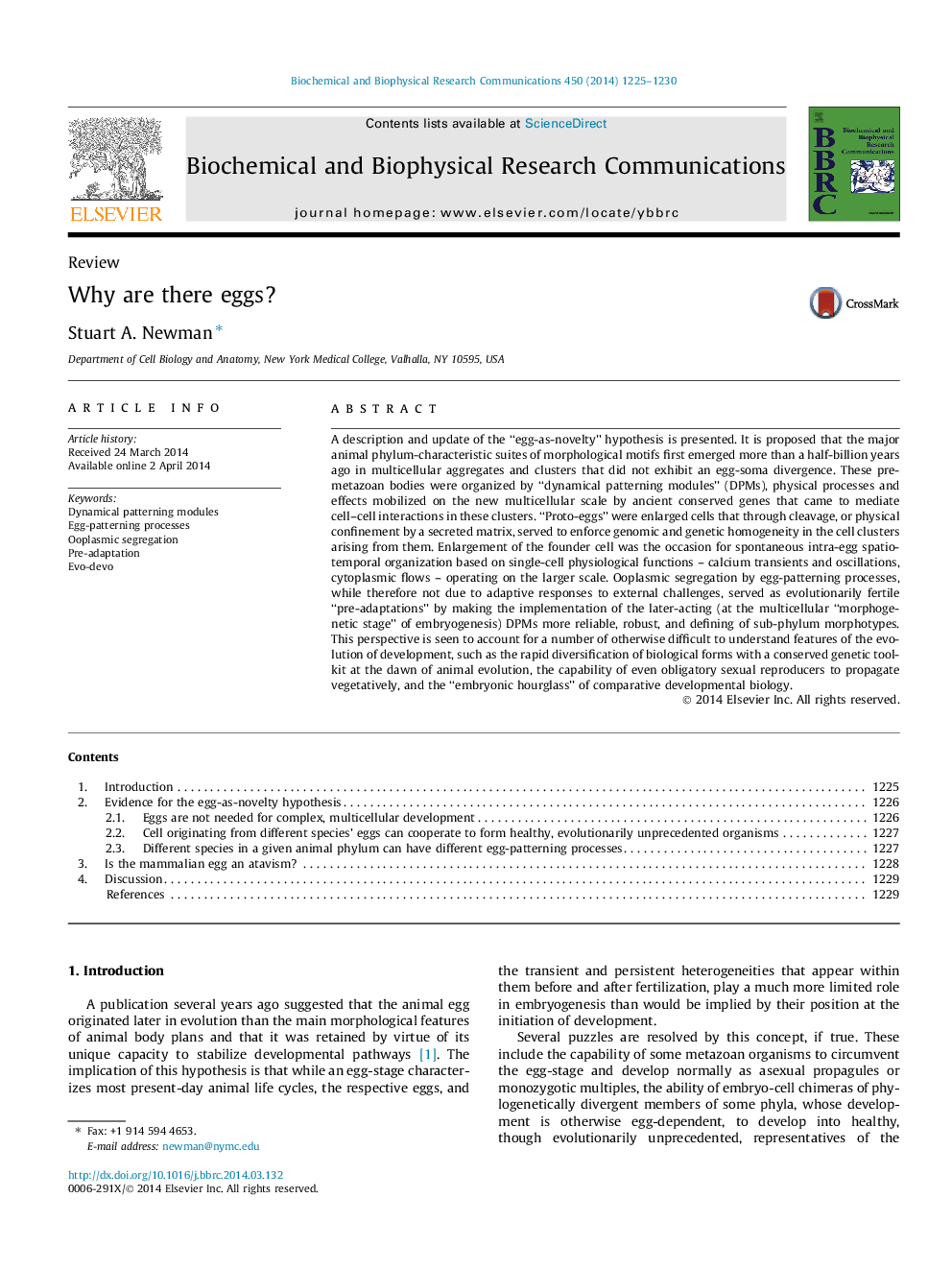| کد مقاله | کد نشریه | سال انتشار | مقاله انگلیسی | نسخه تمام متن |
|---|---|---|---|---|
| 1928488 | 1050360 | 2014 | 6 صفحه PDF | دانلود رایگان |
• The major animal body plan motifs are proposed to have emerged before the egg-soma divergence.
• Enlarged cells (“proto-eggs”) produced clusters by cleavage, enforcing genetic homogeneity.
• Egg-patterning processes in proto-eggs led to ooplasmic segregation, refining development.
• These ideas explain the broad capacity for vegetative propagation and the “embryonic hourglass”.
A description and update of the “egg-as-novelty” hypothesis is presented. It is proposed that the major animal phylum-characteristic suites of morphological motifs first emerged more than a half-billion years ago in multicellular aggregates and clusters that did not exhibit an egg-soma divergence. These pre-metazoan bodies were organized by “dynamical patterning modules” (DPMs), physical processes and effects mobilized on the new multicellular scale by ancient conserved genes that came to mediate cell–cell interactions in these clusters. “Proto-eggs” were enlarged cells that through cleavage, or physical confinement by a secreted matrix, served to enforce genomic and genetic homogeneity in the cell clusters arising from them. Enlargement of the founder cell was the occasion for spontaneous intra-egg spatiotemporal organization based on single-cell physiological functions – calcium transients and oscillations, cytoplasmic flows – operating on the larger scale. Ooplasmic segregation by egg-patterning processes, while therefore not due to adaptive responses to external challenges, served as evolutionarily fertile “pre-adaptations” by making the implementation of the later-acting (at the multicellular “morphogenetic stage” of embryogenesis) DPMs more reliable, robust, and defining of sub-phylum morphotypes. This perspective is seen to account for a number of otherwise difficult to understand features of the evolution of development, such as the rapid diversification of biological forms with a conserved genetic toolkit at the dawn of animal evolution, the capability of even obligatory sexual reproducers to propagate vegetatively, and the “embryonic hourglass” of comparative developmental biology.
Journal: Biochemical and Biophysical Research Communications - Volume 450, Issue 3, 1 August 2014, Pages 1225–1230
